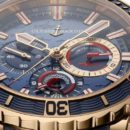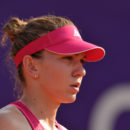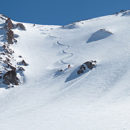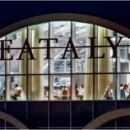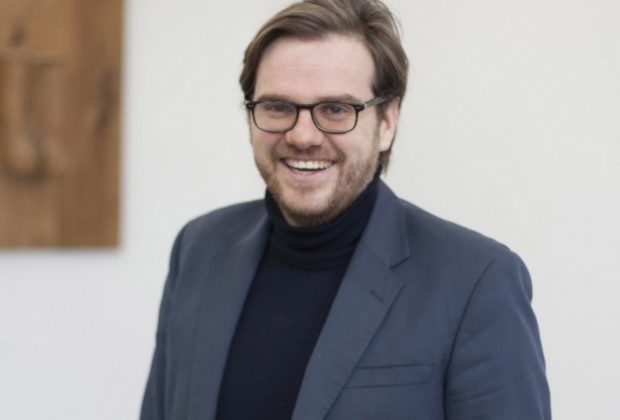
Wim Waelput on Romanian contemporary art
Wim Waelput expressed his thoughts about Romanian art in an unconventional interview about his work. The founding director and curator of a spectacular venue of contemporary art in Ghent accepted Art Safari Bucharest‘s proposal to select the artworks that will feature in this edition’s Central Exhibition, Notes on a Landscape.
As curator of the Central Exhibition at Art Safari, would you give us an insight about what this particular display is all about? Is there any subjective reason that made you accept Art Safari’s proposal?
When I was invited, I was particularly interested in making an exhibition that would go beyond contemporary art only. This time I wanted to go further and I analyzed Romanian art from the origins of its modern tradition, from the mid 19th century, until today. Therefore, there will be a transhistorical exhibition, which will include a larger period of Romanian art. I’ve decided to cluster the exhibition around certain themes, which I considered to be interesting enough in order to construct a narrative around. It is more a personal choice of what I believe to be compelling in the Romanian history and, of course, in the art history of Romania. These different clusters are for me some kind of anchor points, like a set of references due to which I selected the artists, though I didn’t look at a specific type, but tried to look as broad as possible.
The five clusters I’ve decided to work around start with the one called Fluid Identity, which questions the construction of identity, because I sensed that a new way of showing the identity has always been brought about in the Romanian history. Another cluster will focus on the hybrid practices of artists, because they have not always worked in only one certain style. They have always been interested in different approaches and I want to focus on that. There will be a cluster about the artist as a witness of his time, showing how he deals with what he sees around him. There will also be a cluster dealing with the public space in a relationship with the manner art was used to be produced in a kind of private space or how the artists pertained the private space as a liberating environment, either because they simply couldn’t do this in public, or because there were no institutional fields they could work in. The last one will zoom into the new cultural identity as it is depicted during the moment of transition. This is, more or less, the general concept of the Central Exhibition.
When I received the proposal, I started researching on Romanian history and art, as I have always had this fascination for what can be found beyond the Western context. I believe Romania has a very complex history, so this is an opportunity for me to be able to discover more, as I have always liked to learn new things. I felt that the exhibition I’m proposing could have an audience that it is interested in this region. It is not my intention to re-write or re-think the art history in Romania, but to read it from my point of view.
What aspects do you find the most striking when thinking about Romanian art?
I discovered some kind of “hybridity”, the way the artists have always dealt with the socio-political context and that it had a great influence on their art. Therefore, the artistic production is very much related to the society and this facet is always a point of interest. But if I were to pick one aspect I found extremely interesting about Romanian art, it would be the vanguardists from the beginning of the 20th century. Everybody knows that in that period Romanian art was linked with the Dadaism, but if we look also in the surrealist period, there are so many kinds of vanguards that they have been developed, within such a short time frame. I still have the feeling that I have not been able to discover everything yet. There are so many interesting things when it comes to the Romanian art…
Walter Benjamin implies that since the work of art could be technologically reproduced, it’s cult value turned into some kind of exhibition value. Why do you think people need to visit art exhibitions although the art works are now a click away?
There has always been what can be called “a physical encounter” with an artwork, which is still very important. Not only it helps you discover the materiality of an object, but it also imposes you some kind of confrontation with the artwork. The digital art is always fragmented. An artwork doesn’t exist in a vacuum and an artwork always needs a context. When you visit an exhibition, there is always the greatest ability of a context due to which you can discover the reality of that work and understand its message. We will always need that because it’s not like the artist is catapulted in an environment, he produces the artwork and he is out again. Of course it can be a tool to research an artwork online, but it can never make you completely comprehend its complexity. For that you have to come and experience it!
In the same vein, are people nowadays more art-educated due to all the information that they can find online?
The more information you get, the easier is also to forget it. 🙂 If you use Internet for research is great, I think everyone is doing this now, and it can offer you a general impression. However, you always have to consider the reliability and the validity of the source in order to assure you get the correct information. If one approaches everything critically, of course he/she can be more informed, but the questions that stands is whether this knowledge is valuable or not.
You maintain a close relationship with the “art newcomers” considering the affiliation of your art gallery, KIOSK, with the School of Arts in Ghent. How would you describe the “new wave” of the contemporary art?
The market affected the artists’ work everywhere and this “new wave” collocation really depends on what is happening in every region. Though, I would like to see more artists doing art again from an artistic interest and not so driven by the market. They should be more aware of the fact that they can associate between them, in order to capture an audience, and finally release themselves from the market dominance and the pressure of “big shows”. This “self consideration” that I am witnessing in Belgium will soon make its comeback and I believe that this could be considered a “new wave”.
In your personal view, how do Romanian contemporary artists stand on the international art scene?
I think they stand quite well! I have already known some Romanian contemporary artists before, no so many that I get to know now, but my impression is that they are mobile, well informed and well connected. I also believe that the older generation is soon going to be rediscovered in the international field.


